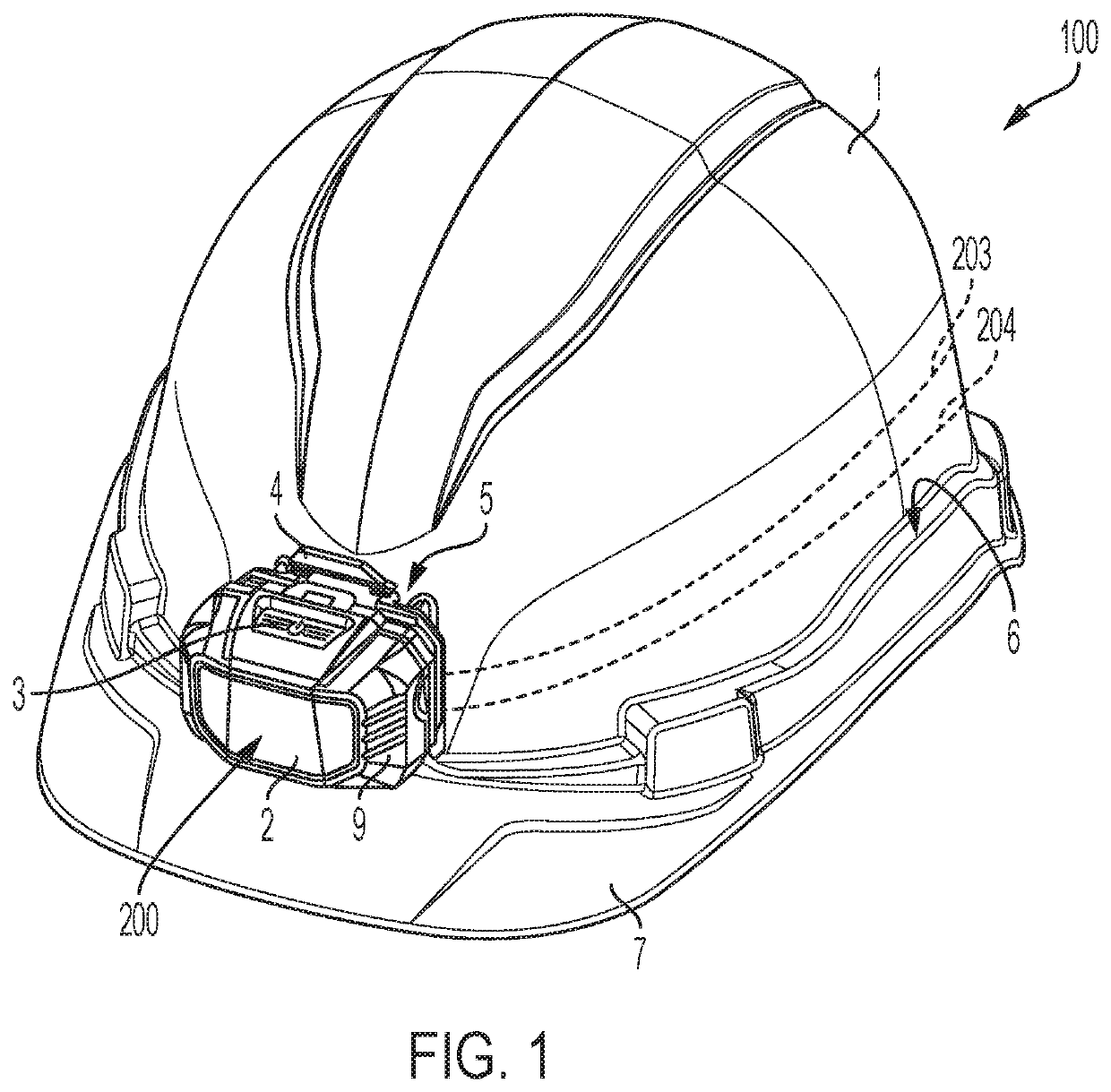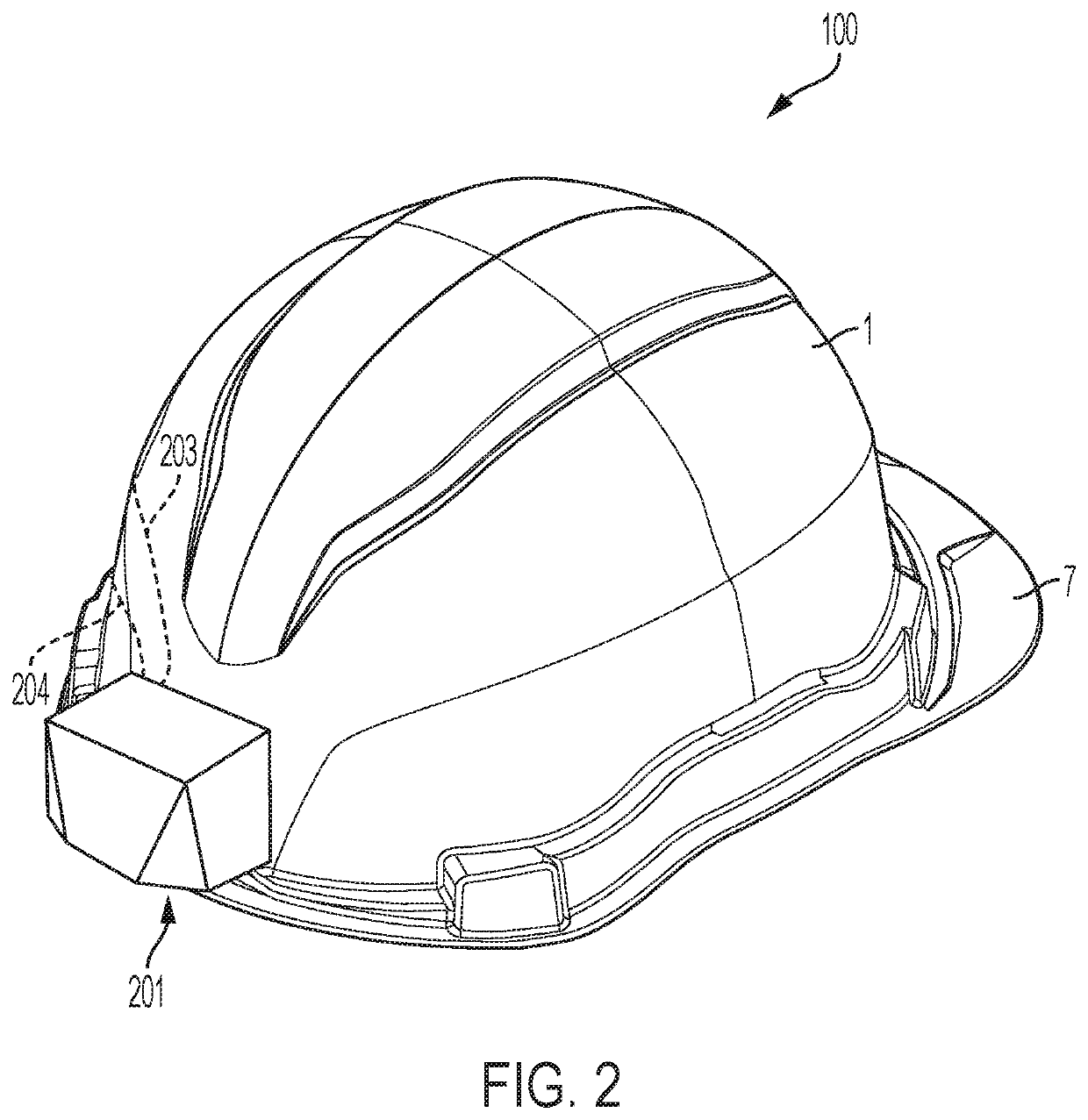Safety helmet
a safety helmet and helmet cover technology, applied in the field of personal protection devices, can solve the problems of band-type mounting systems prone to slipping off from the safety helmet, requiring constant readjustment by users, and difficulty in switching between orientations
- Summary
- Abstract
- Description
- Claims
- Application Information
AI Technical Summary
Benefits of technology
Problems solved by technology
Method used
Image
Examples
Embodiment Construction
[0021]The present invention relates to the field of personal protection devices and, more particularly, safety helmets. The safety helmets in accordance with the disclosure include two mounts, one on either the front or back facing sides of the helmet, which permit connection of removable modules onto the helmet such as headlamps, cameras, speakers, larger capacity batteries, cellphones, and the like. In one embodiment, the helmet includes an integrated, non-removable power source and integrated electrical leads or conductors to a port for a removable device. In this way, the removable device such as a headlamp can be made lighter without sacrificing battery power output or electrical potential. The headlamp, which may include its own power source that is chargeable by the helmet, may be removed and used as a flashlight before being replaced onto the helmet for charging.
[0022]A safety helmet 100 in accordance with one embodiment of the present disclosure is shown in FIG. 1. The safe...
PUM
 Login to View More
Login to View More Abstract
Description
Claims
Application Information
 Login to View More
Login to View More - R&D Engineer
- R&D Manager
- IP Professional
- Industry Leading Data Capabilities
- Powerful AI technology
- Patent DNA Extraction
Browse by: Latest US Patents, China's latest patents, Technical Efficacy Thesaurus, Application Domain, Technology Topic, Popular Technical Reports.
© 2024 PatSnap. All rights reserved.Legal|Privacy policy|Modern Slavery Act Transparency Statement|Sitemap|About US| Contact US: help@patsnap.com










